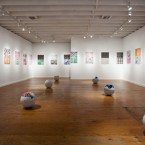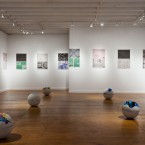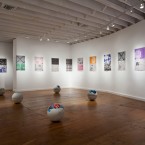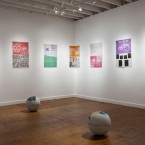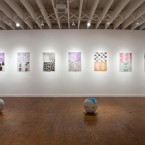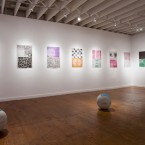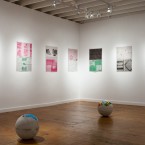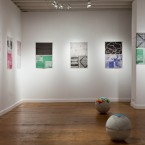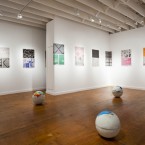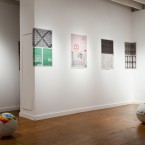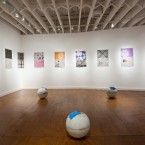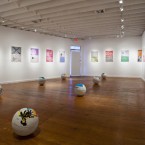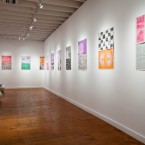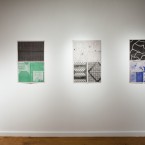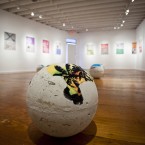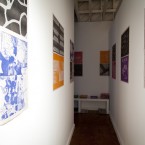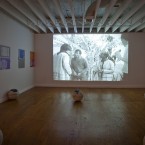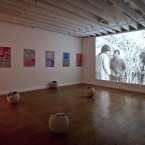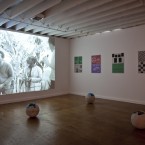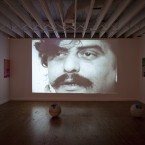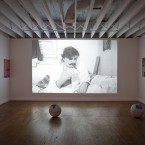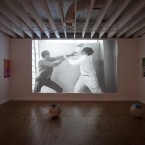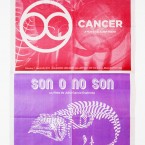Gean Moreno and Ernesto Oroza: Drywood
February 7 – March 28, 2013
Opening Reception: Thursday, February 7, 2013, from 7 to 10pm
Alejandra von Hartz Gallery is pleased to present “Drywood,” a solo exhibition of collaborative works by Gean Moreno and Ernesto Oroza. The show runs from February 7 to March 28, 2013. An opening reception will take place on Thursday, February 7th, from 7 to 10pm.
As they have done in their previous research-driven projects, Moreno and Oroza begin by zeroing in on contemporary variations of an object typology — in this case, they began with the souvenir — in an effort to understand how it functions in relation to forces of contemporary production, the generation of urban morphology and identity, and the changing terrain of user engagement. With this new project, they seek to understand how generic production, embodied in the souvenir, stands as both the ultimate horizon of rationalization in object design and a generative force that increasingly determines our urban environments. At Alejandra von Hartz Gallery, Moreno and Oroza will present a series of concrete spheres which, during the casting process, swallowed souvenir objects. These are an effort to mesh two objects that are distributed throughout the city: the generic spheres that serve as obstacles and place-markers and artifacts that serve to develop identity narratives for the city. The layout of the spheres and the quantity employed has been determined by the wooden sheets (modules) that make up the gallery’s floor.
Along with the spheres, Moreno and Oroza will present a series of compositions, assembled by others, that employ pages from the Tabloid (www.thetabloid.org) that they have been producing over the last four years. The display of these compositions will be determined by the metric constraints of the standard tabloid. The Tabloid has served as a repository for their research and texts, a documentary vehicle, and a space to enlarge the discursive space of their practice and the exhibitions in which they participate. Hans Ulrich Obrist, Joe Scanlan, Yona Friedman, Hito Steyerl, and Peter Lang, among a number of other theorists and cultural producers, have contributed to the Tabloid. Moreno and Oroza will also present a bootleg copy of Glauber Rocha’s film Cancer and zines filled with pirated essays by Argentinean designer-painter-theorist Tomas Maldonado and Brazilian filmmaker Glauber Rocha.
Download Tabloid # 24 here
For more information, please contact the gallery at info@alejandravonhartz.com or call 305.438.0220. Please, visit our website at www.alejandravonhartz.net
Alejandra von Hartz Gallery
2630 NW 2nd. Avenue
Copyright Oriol Tarridas_2013
Drywood — Hunter Braithwaite
2013/03/17
http://artforum.com/picks/section=us#picks39518
“Drywood,” the title of this exhibition, refers to Cryptotermes brevis, a termite that can survive with barely any water, relying on six rectal glands to retain all moisture from digested matter. Endemic in Florida, it is an apt symbol in the hands of Gean Moreno and Ernesto Oroza, who here use the insect to signify another tropical infestation—the tourist souvenir. Just like a termite gnaws through walls, a souvenir eliminates the distance between cities and undermines their autonomous identity by propagating a simplistic, generic reading of a place. For their first exhibition at this gallery, Moreno and Oroza have placed twelve cement balls—each fifteen inches in diameter—in two neat rows across the front space. Before the concrete was poured, the artists stuffed the molds for the balls with Florida-branded beach towels featuring dolphins and sunsets, and now the spheres hemorrhage patches of brightly colored terrycloth. In its raw materiality and its role as a protective shell, the concrete hints at both the manufacture and the transportation of these souvenir items. Moreover, the anonymous surfaces, crisp and unadorned save for the prints of sea turtles peeking through, underscore the inherent sameness of all tourist items—the tchotchke Platonic ideal.
But the cracking face of the spheres realizes a breakdown of the logical dissemination of the souvenir and similar consumer items, a crisis that is examined in the rest of the show. Stapled to the walls in ordered repetition are twenty-four issues of Tabloid, Moreno and Oroza’s single-page newsprint journal, at once a record of their practice and an ongoing critique of mass production. A bootleg copy of Glauber Rocha’s 1972 Brazilian film Cancer plays in the back room. The visceral memory of the Brazilian avant-garde is evoked by Rocha’s self-proclaimed experiment in minimal editing, and within this streamlined world of the spheres and the newspapers, it is a rambling, amorphous intrusion. Like the termite, the film burrows through the traditional borders of shot and scene by actively ignoring editing. Here is the crux of Moreno and Orozas’s argument—an attempt to unite the production and distribution of souvenirs through the strange biology of termites. Throughout the show, the uneasy placement of the objects foreshadows future rupture. The artists have set the spheres on the cracks between the floorboards and one, set off by the crack, seems to be threatening to tunnel—not unlike Cryptotermes brevis—right through the drywall.
— Hunter Braithwaite
